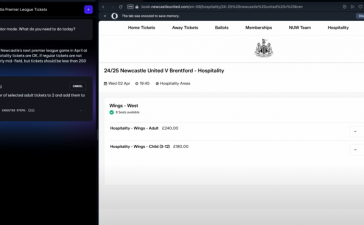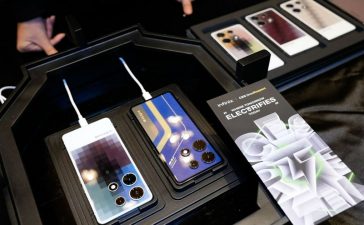Key Takeaways
- Some games shine on foldable phones, taking full advantage of the larger internal display in ways “normal” candybar phones cannot.
- Keep in mind that some games designed for a rectangular aspect ratio may not display well, or at all.
- Ultimately the type of games you like to play and how you like to play them (whether that’s with a controller or not) will help you decide whether to go the foldable route or not.
I love foldable phones. I’m writing these words on a Samsung Galaxy Z Fold 6, which has completely replaced my PC. It also serves as my preferred gaming console. But it’s not all sunshine and roses! There are strengths and weaknesses to keep in mind when purchasing a book-style foldable specifically for gaming.
Some Games Make Great Use of the Big Screen
My Galaxy Z Fold 6 has a 7.6-inch screen when unfolded, which is a hair larger than the 7.4-inch display on the Steam Deck OLED. This is a high-resolution 1,856 x 2,160 AMOLED panel with a refresh rate of 120Hz and brightness of 2,600 nits.
It’s gorgeous, above and beyond what you get on the majority of dedicated gaming handhelds, whether that be the dated Nintendo Switch or an ROG Ally running Windows. The OnePlus Open and the Pixel 9 Pro Fold both have even larger screens.
Some games look absolutely amazing on this display. I prefer to play certain genres on my foldable phone than on any other device, such as adventure games like Midnight Girl and puzzle games like Monument Valley. If this is your preferred type of gaming, you can stop reading.
Unless you’re really hung up about the crease (which I personally think is more of a misconception about foldables than you might think), you’re going to enjoy having a foldable. Check out our favorite foldables right now.
Some Games Look Less Ideal
Foldables aren’t a surefire recommendation for gaming, just like they aren’t an ideal fit for watching YouTube videos. Why? The aspect ratio is all wrong! Most games are designed for a rectangular 16:9 TV-style shape, going up to 2:1 to fit on today’s tall mobile phones. An unfolded foldable is much more square (which, ironically, makes them a great way to watch older shows that originally aired in 4:3).
Many games don’t adjust to a square-shaped aspect ratio, so you’re left with letterboxing (black bars at the top and bottom). This is what happens if I load up Machinarium, for example, or stream Sea of Stars over NVIDIA GeForce NOW:
Other games make the effort, but the experience isn’t always ideal. Having a square field of view can mean you see fewer things on-screen since you can’t see as far to your left or right without turning.
Some retro titles feel particularly stretched out at this screen size, like Coromon or Sparklite. Other games just aren’t playable, like Iron Marines, which runs but has vital buttons unreachable off-screen due to improper resolution.
That said, the outer screen remains an option. On the narrow cover display of a Z Fold, you still have to deal with a degree of pillarboxing (now on the left or right), but you don’t have this issue on phones like the OnePlus Open and Pixel 9 Pro Fold, which have a standard phone shape. In those devices, playing with the phone closed is no better or worse than any other phone.
Does that mean I would recommend picking up one of those other phones instead? Not necessarily
Don’t Overlook Samsung DeX
Samsung’s foldable is the only one in the US that comes with an Android desktop that appears when you connect to an external display. Gaming is one of my favorite uses of Samsung DeX, since it turns my phone into what feels like a full-blown gaming PC.
Games that don’t work well on the internal screen tend to play just fine when launched on a computer monitor. Iron Marines has become a desktop RTS for me (which is something the developers always intended, since the game is available for PCs through Steam). When I GeForce NOW while using DeX and my trusty 8BitDo Pro 2 controller, it’s easy to forget that I’m not actually gaming on a PC or console.
With this setup, I didn’t feel the need to worry about how I was going to play Life is Strange: Double Exposure. I knew my phone had it covered. Much of the time, I play using DeX and AR glasses. I must say, it’s a fun time to be a gamer.
Foldables Have Smaller Batteries
While foldables are larger devices, they tend to have smaller batteries than comparable flagship phones. Sticking with Samsung’s lineup, my Z Fold 6 has a 4,400mAh battery compared to the 5,000mAh battery in the Galaxy S24 Ultra. The Pixel 9 Pro Fold has a 4,650mAh battery compared to the 4,700mAh in the Pixel 9 (5,060mAh on the larger Pixel 9 Pro XL).
Foldables also have smaller cooling chambers, yet I personally wouldn’t sweat that too much. Performance on most book-style foldables is stellar and outperforms all but a few slightly better-performing phones, like the S24 Ultra and the iPhone 16 Pro Max. If the Pixel 9 Pro Fold feels a tad slower, it’s more likely due to Google’s Tensor chip rather than inadequate cooling.
Controllers Can Feel a Bit Awkward
Foldable phones will pair with any Bluetooth controller that supports Android, so that isn’t an issue. If you invest in a cheap phone stand, the larger display means you can prop up a foldable and game in tabletop mode like you might an undocked Nintendo Switch.
It’s with telescopic, USB-C controllers where issues start to arise. With any foldable, the USB port is not going to be anywhere near the center of the device, so your phone display will either end up quite a bit below or above where you would ideally like it to be. For a better fit, I recommend a Bluetooth telescopic controller instead, like the GameSir G8 Plus.
This issue goes away when gaming using the cover display. The added thickness isn’t a deal-breaker, but it does look a tad more awkward.
With the OnePlus Open, you may run into the issue of the camera bump being too large to fit in certain controllers, but that’s a OnePlus issue, not a foldable one.
Is a Foldable the Best Option for You?
The mobile gaming landscape has improved in recent years. The iPhone 16 is receiving more AAA game ports and has a larger game library in general, boosted by Apple Arcade exclusives. If you primarily game at home and don’t mind having a less portable device, you may be well served by an iPad.
If you want to play the latest games natively, at the ideal resolution, you may want to invest in a Windows gaming handheld or Valve’s Linux-based Steam Deck instead. You get more portability than a desktop or laptop, without having to make many adjustments to which type of games you play, and how.
I would skip dedicated gaming phones though, like the ASUS ROG line. You aren’t gaining any noticeable performance improvements, but you will get far fewer years of software support than you get from Apple or Samsung.
For me, the Z Fold line is where it’s at. There simply is no other consumer tech device this versatile, able to serve as a phone, a tablet, a PC, a gaming console, and even a book-shaped eReader.
A foldable may not be ideal for all games, but the sheer convenience factor means it’s the game console I’m most likely to reach for nonetheless.
















